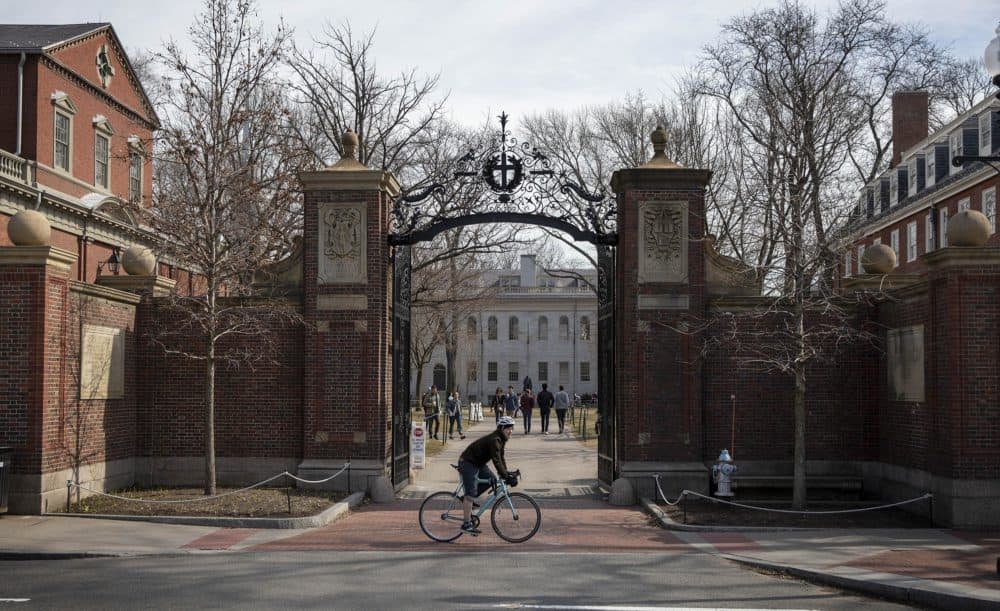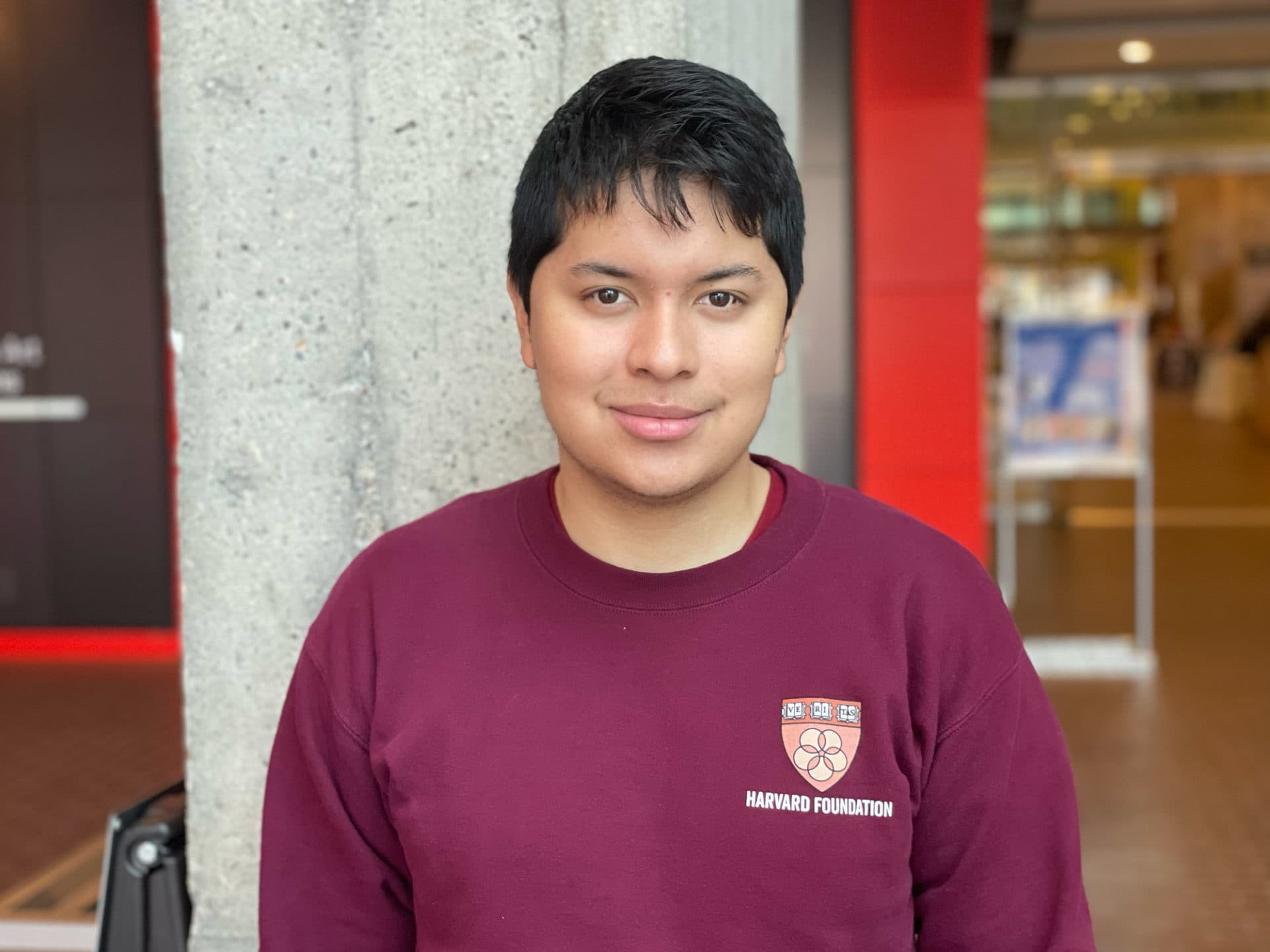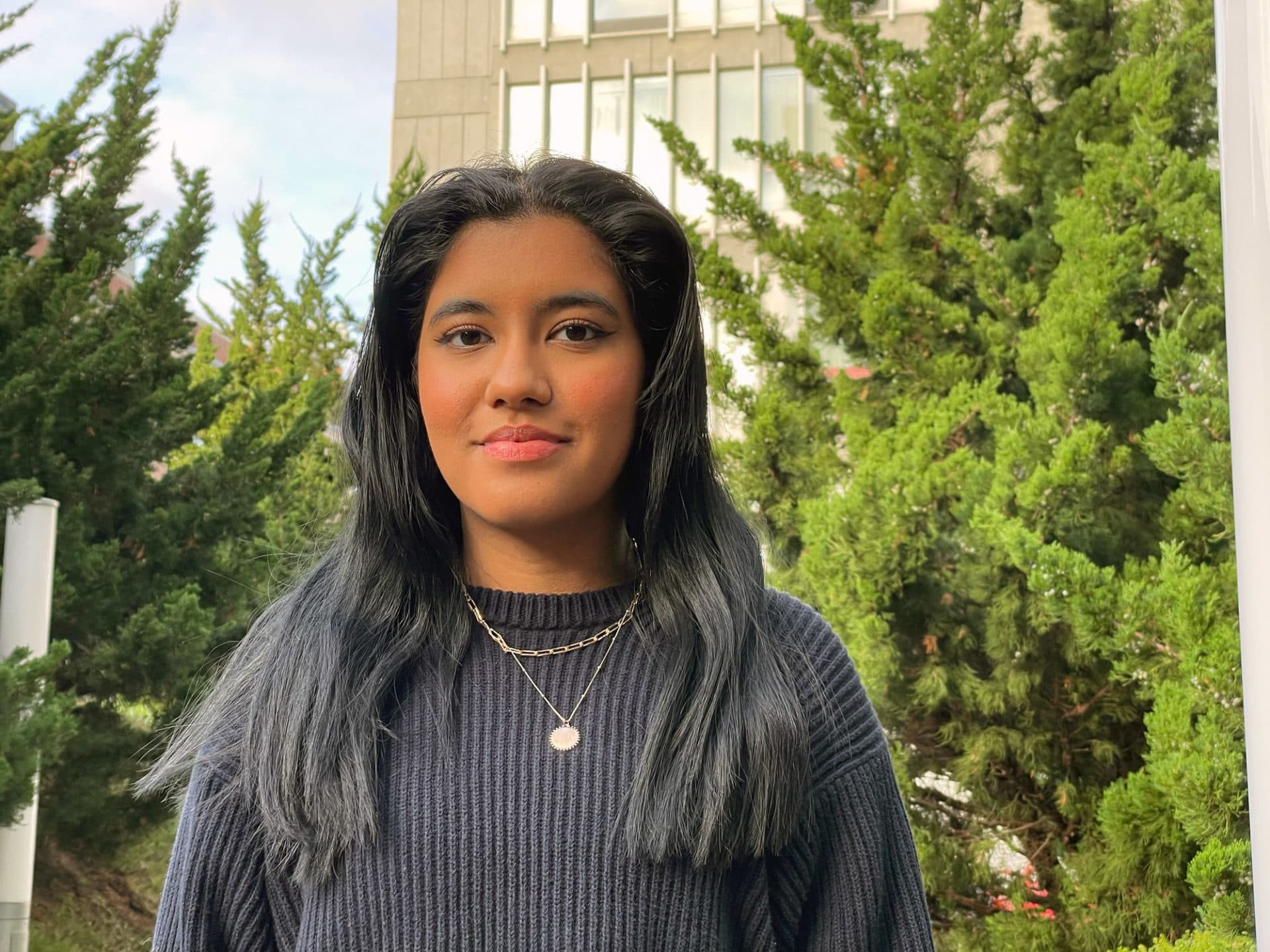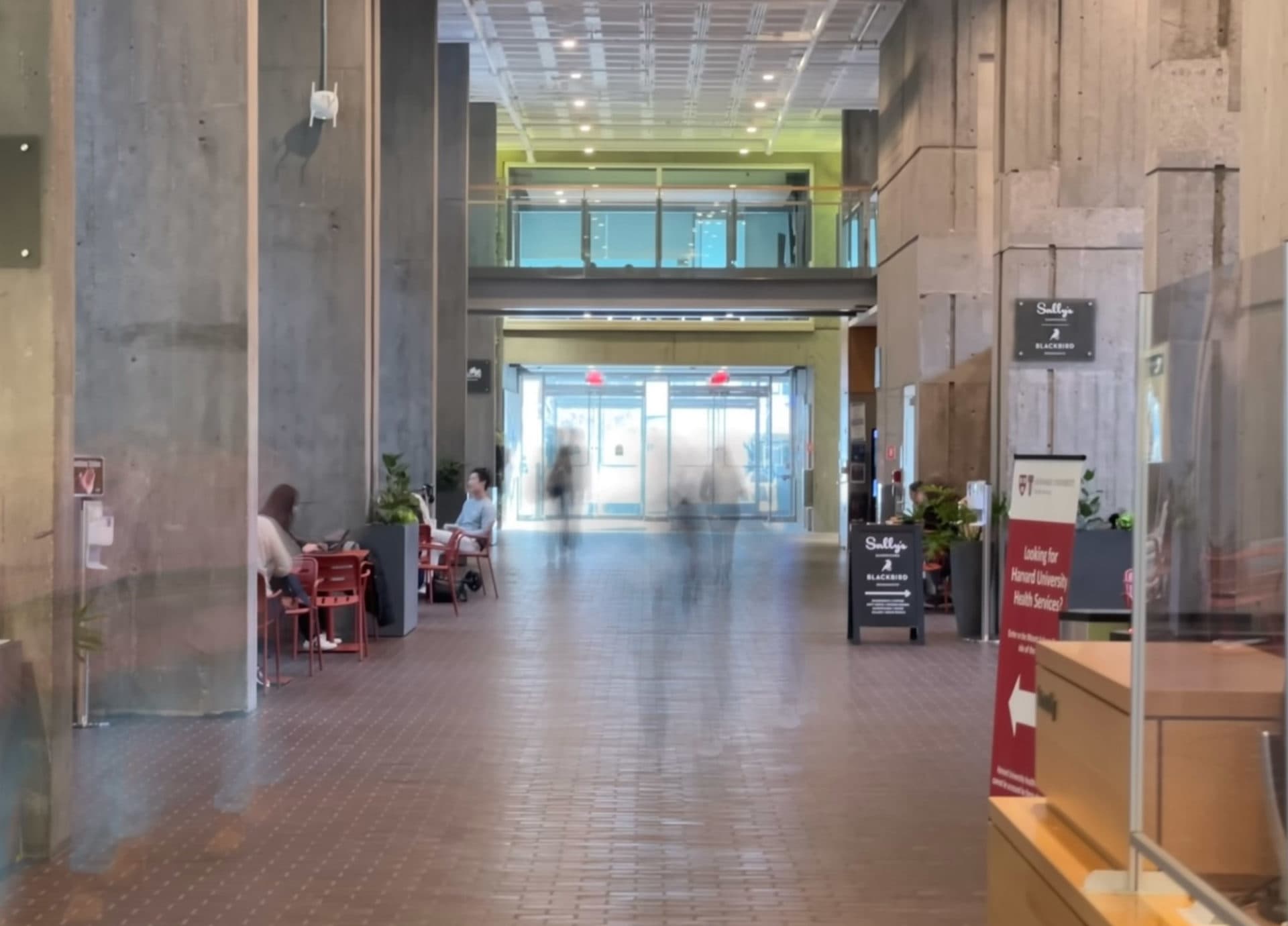Advertisement
As a more diverse Harvard braces for a Supreme Court ruling on affirmative action, what comes next?

Agustín León-Sáenz hasn’t always felt quite at home at Harvard College.
In 2010, León-Sáenz — now a Harvard sophomore — immigrated to Albuquerque, New Mexico from Ecuador with his family. By his count, he’s one of just a handful of Ecuadorians, and students from New Mexico, among Harvard's undergraduates.
León-Sáenz has found a group of like-minded friends, mostly students of color. Some are immigrants, others of indigenous heritage; many are from low-income backgrounds. And they’re united by a common challenge: how to make the most of a college experience at an institution that still isn't tailored to them.
“It has really been a long journey: trying to find community [here], and having to create that community myself,” León-Sáenz said. “That brings me so much alarm, because that’s the case with affirmative action.”

As the country awaits a decision next year from the U.S. Supreme Court over the use of race in admissions in higher education, students like León-Sáenz bear more than their share of anxiety.
The decision will have reverberations beyond just Harvard, one defendant in a pair of cases that allege affirmative action has unfairly disadvantaged white and Asian American applicants.
But the pending decision could be especially consequential at Harvard, which — after years of being disproportionately white and wealthy — has now become, at least, significantly more racially diverse.
Harvard contends affirmative action has been an indispensable tool in its efforts to build a welcoming and representative campus.
But some experts say those efforts have been half-hearted. For example, Harvard’s admissions system still includes a “legacy” preference for the children of alumni, who tend to be from white and wealthy backgrounds.
Advertisement
The result, says Richard Kahlenberg — until recently a longtime fellow at the Century Foundation, who studies college admissions — is that Harvard and many other highly selective institutions end up “racially diverse while still being economically tilted toward the rich," which contributes to the two-fold struggle experienced by León-Sáenz and his friends.
That includes juggling campus jobs and providing for family back home — concerns not shared equally by classmates coming from the wealthier world of elite private prep schools.
"The biggest struggle," León-Sáenz says, "is the self-advocacy students like us have to do, to be introduced to resources like tutoring services on campus, or how to build professor relationships.”
Amid legal challenge, a sense of loss
Harvard’s race-conscious admissions policy was met with intense scrutiny by the Supreme Court's conservative justices during oral arguments in late October.
Many expect today's conservative majority on the high court to strike down Harvard's "holistic" approach to awarding racial preferences in admissions, though lower courts had deemed it acceptable.
Over the last decade, race-conscious admissions has played a role in dramatic change at Harvard, which only admitted 3.2% of applicants in its latest admissions cycle.
In 2010, almost half of the college's roughly 7,000 undergraduates were white students from the U.S. In 2019, that was down to just a third. That made room for 26% more Asian American students, 50% more Black students and 50% more Hispanic students.
The Supreme Court has long encouraged colleges to find “race-neutral” ways to promote diversity.
Harvard has adopted some alternative policies, including stepped-up recruitment and increased financial aid that allowed students from families that earn less than $75,000 a year to attend for free. In 2021, the number of Harvard undergraduates eligible for Pell grants, due to "exceptional financial need," climbed to 22%, the university's highest on record in federal data.
But school officials found that those and other “race-neutral” efforts alone wouldn’t be enough to maintain its current racial makeup.
University officials did not respond to requests for comment for this story.

That conclusion has unsettled some current students who have come to depend on the campus’s growing racial diversity.
Muskaan Arshad, a Harvard sophomore, was born in India, but grew up in Bentonville, Arkansas, a small city where nearly two-thirds of the population is white. It was an uneasy place to call home.
“I remember, someone wrote ‘terrorist’ on my desk. I pointed it out to students around me, and they just laughed,” Arshad said. “I never felt accepted, being Asian American in Arkansas.”
For Arshad, coming to Harvard was a revelation.
“I really understood the benefit of being in such a diverse place and feeling like my race wasn't something that I had to hide away and be ashamed of, because no one else was,” she said.
Both Arshad and León-Sáenz were among the dozens of Harvard students who traveled to Washington to rally in front of the Supreme Court in late October.
What to expect from 'race-neutral alternatives'
Nine states have banned race-conscious admissions at their public universities, including Michigan, New Hampshire and California. And data shows the result has led to at least a temporary and stark decline in overall racial diversity.
Zachary Bleemer, an economist at the Yale School of Management, studied the aftermath of California’s ban, which took effect in 1998, and how the state system reacted.
The University of California, Berkeley tried embracing "race-neutral alternatives” to affirmative action: building up outreach at predominantly Black and Latino high schools; guaranteeing admission for top-scoring California students; and ending its reliance on standardized tests amid criticism that test scores are highly correlated with income.
The results, Bleemer said, were disappointing: “None of these policies are nearly as impactful as race-based affirmative action."

Even after Harvard adopted some of the strategies employed elsewhere, its undergraduate population still includes disproportionately many affluent students. As of 2015, an analysis by economist Raj Chetty showed Harvard ranked 56th out of 2,395 American colleges and universities in terms of students’ median parent income, at $168,000.
Kahlenberg, the researcher who was an expert witness for the group suing Harvard, found that as of 2018, 71% of the college's Black and Latino students were considered economically “advantaged” — well out of proportion with the status of Black and Latino families nationally.
Kahlenberg argued there may be a less altruistic reason that universities are fighting a change in their admissions model: wealthy students come better prepared to navigate college life, and cost their universities less in financial aid and support.
In Kahlenberg's view, with its $50.9 billion endowment, Harvard is better situated than perhaps any other institution to embrace a new goal in admissions: balancing racial and socioeconomic diversity, to create what he describes “a fair admissions process that identifies students who have been able to overcome obstacles in life.”
